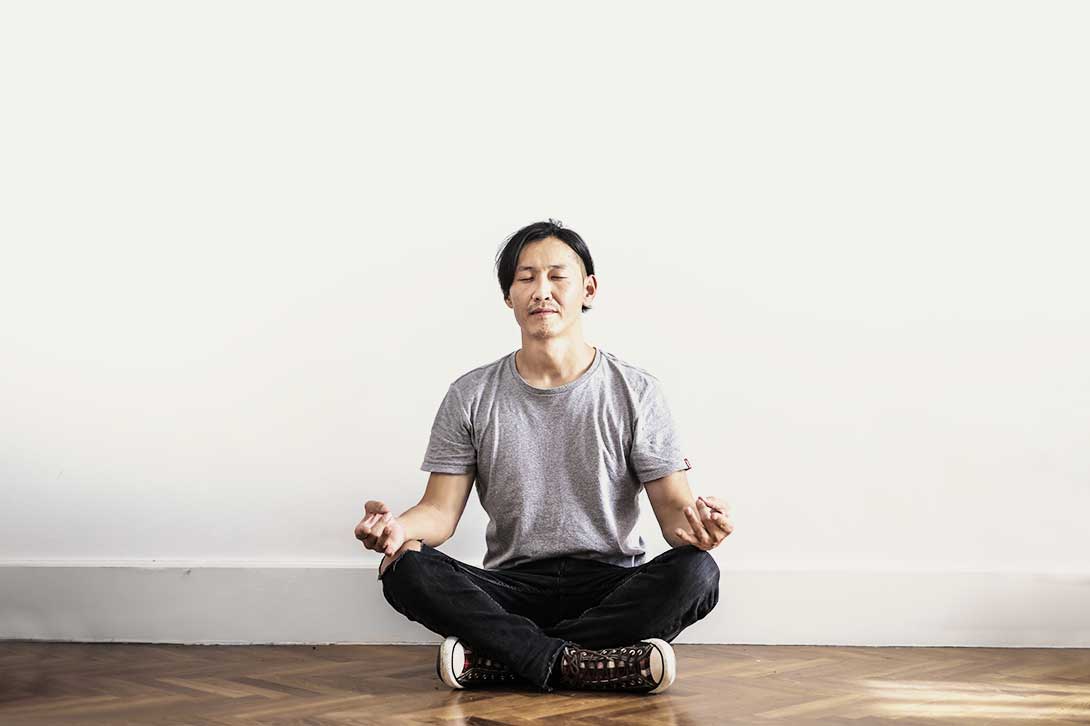iCANThrive
Helping improve your emotional, social and mental wellbeing

Six types of meditation to bring on the calm
You may have heard the hype about meditation and its many benefits for health and well-being. It’s a practice that is thousands of years old, and yet it’s still being discovered and explored.
For those considering it as a complementary therapy tool, it can prove to be very effective. Meditation can be as straightforward as sitting in a chair and focusing on your breath. Once you start with a little daily meditation, you may find it makes a big difference to your life, whether you do five minutes a day or you choose to delve deeper.
Before you start, it’s helpful to know that there are countless different types of meditation, and it’s important to find one that suits you, your needs and your lifestyle. You may even choose to adopt more than one type depending on what is happening for you in your life. For example, you may just want to relax, you might be experiencing stress, you may have a problem that needs work, you might be wanting to relieve some pain in your body, or you just want some soothing before sleep.
Below is a handy guide to some of the most common meditation techniques practiced by people over the world. There is no one technique that is ‘best’. You are the expert and the boss here, take what works for you.
Meditation techniques typically fall into six main categories:
1. Contemplative meditation
Contemplative meditation is otherwise known as peaceful visualisation. You don’t need to ‘work’ and the more you ‘try’ the harder it will be, and that defeats the purpose. So close or half-close your eyes and ‘see’ or imagine the movement of your breath, a white light healing the body, a tranquil scene or even the meaning of a specific word.
You can start the practice of contemplative meditation on your own, or you might prefer some guidance in a class. There are also many apps, videos, CD’s and books available.
Some examples of contemplative meditation include:
- Body scan
- Basic breath meditation
- Loving-kindness meditation
- Chakra meditation
- Heart meditation
- Sleep meditation
- Affirmations, mantras and words.
2. Concentrative meditation
Concentrative meditation is considered to be one of the more ‘active’ meditation types. You activate your ability to focus and concentrate on one thing for a given period of time.
Depending on the practices mentioned below, you may require a teacher to guide you.
Some examples of concentrative techniques are:
- Intense breathwork
- Gazing (gazing at candles, symbols or night stars)
- Chanting
- Counting
- Colouring/painting.
3. Transcending meditation
This is the most ancient style of meditation which is very powerful and easy to practice. An experienced teacher will give you a personal mantra to repeat silently in your mind. Your specific mantra will be designed to help your mind transcend beyond thought, into a state known as ‘bliss’, and for your body to slide into profoundly deep rest.
The deep rest gained from 20 minutes of transcending meditation is said to be the equivalent of 4 hours of sleep.
The two most popular transcending techniques are Vedic Meditation and Transcendental Meditation. You can find out more about them on the web and learn this technique by attending a short course.
4. Mindfulness meditation
Mindfulness is the art of becoming deeply aware of the present moment and fully experiencing what happens in the here and now. It is about training oneself to observe thoughts, sounds and whatever is happening in the moment – without judgement. When our mind wanders, we bring it back to the present moment again and again.
Mindfulness meditation differs from concentrative meditation in that your awareness is ‘wide open’ to sounds, smells, and all that is occurring. Concentrative meditation pays attention to and focuses on one thing.
Mindfulness can be practised with eyes closed as a seated meditation, but for many, it is also a way of life.
Some examples of mindfulness meditation are:
- Mindfulness of breath
- Mindfulness of the five senses
- Mindfulness of thoughts
- Mindfulness of daily activities
- Buddhist and Zen practices (basis in mindfulness)
- Vipassana – a Buddhist system of practice
- Mindfulness-based stress reduction
5. Moving meditation
Various forms of movement can be used as a focus for meditation. However, it is always advisable to complement moving meditations with some form of seated practice. Examples of moving meditations are:
- Yoga
- Tai Chi
- QiGong
- Walking meditation
- Sufi dancing
- Ecstatic or trance dancing
6. Sound meditation
Sound instruments have been used for centuries to cultivate a state of deep relaxation and bring people into a meditative state. This meditation works at the levels of vibration and frequency that communicate with our bodies which are also made of sound waves. The musical instruments can help to ‘re-tune’ the body’s frequency. These days there are many sound healing or ‘sound bath’ workshops available, and people report profound feelings of physical blockages being released or that they come out feeling more lucid and more enlivened.
Simple sound meditations can also be found on many meditation apps, YouTube and other websites.
Finding your style
The most important thing with all of these meditations is for you to have a play. There is no ‘right’ way. The purpose of meditation is to bring you some clarity and relief from all the noise and jumble and stress and busyness and stormy feelings that can be just too much sometimes. You can find little gems in these practices, and create your own experience, make up your own ‘song’ just for you. It doesn’t have to be a spiritual or mysterious journey. Don’t be daunted by images of buddhas and robes and chanting if that is all too ‘out there’. It’s beneficial for your mind and body and just a few minutes a day can alter your perspective and make things a little easier.
Resources
Further Reading
- Explore meditation Q&As by Jo Amor
Specialists
- Jo Amor is a Vedic meditation teacher based in Sydney, Australia.
Podcasts
- Explore the science and benefits of meditation at the 10% Happier podcast.
App
- Download the Smiling Mind free app with daily meditation and mindfulness exercises.
YouTube
- Yellow Brick Cinema Youtube channel offers meditation music of varying lengths and styles.
- Omega Insitute’s Youtube channel offers a wide variety of meditations for beginners.
We would love to know any resources you found helpful which we can share to help others. Please get in contact.



















